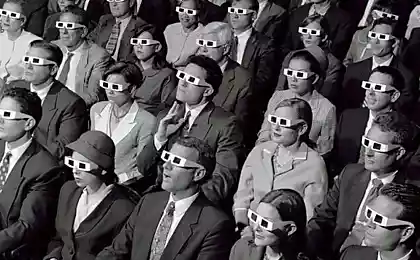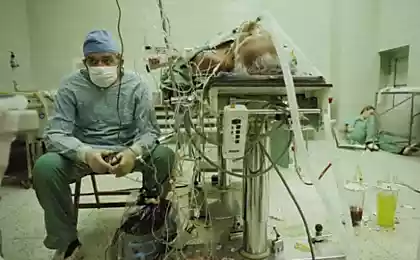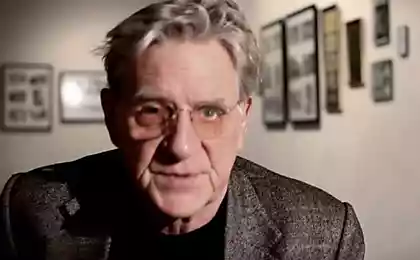1431
Is the case when the truth is fantastic fiction
10 incredible things that have become a reality thanks to science
In the world of science is constantly committed amazing new discoveries, and to the extent that, as we move into the future, scientific advances are beginning to border on magic. Science is constantly striving to do the impossible, and she manages it.
Continued under the cut ...
10 points will be
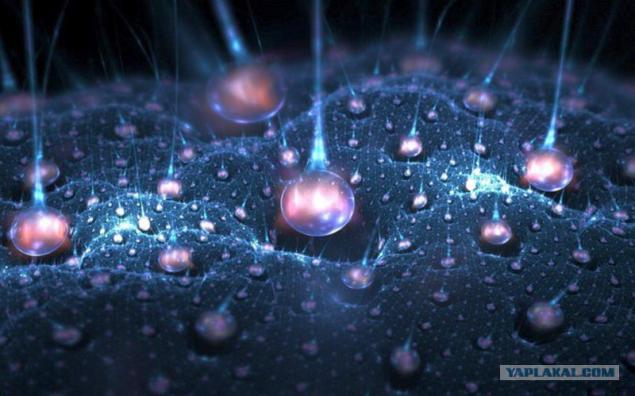
1. Teleport
Humanity has a long way to look for this teleportation. It would seem that science fiction, but science proves that it is possible even that. Researchers from Delft University of Technology were able to teleport information within a single room and prove the theory of quantum entanglement in practice.
They isolated a pair of electrons of the two diamonds at a distance of ten meters from each other. According to the theory of confusion, changing one spin will lead to the fact that the second spin also change. And so it happened: the change of one of the diamond effect on the change of another. The experiment has worked in 100% of cases. Now researchers are working on increasing distance - if the theory is correct, then it too will sooner or later turn out. And if experiments with large distances are successful, we will soon be able to teleport information using quantum particles.

2. Tying light in knots
The light should move in a straight line - a long time it was considered axiomatic. But scientists from the universities of Glasgow, Bristol and Southampton first light tied in knots that previously appeared only abstract mathematical concept. Nodes were created using holograms, directs the flow of light around the areas of darkness. This experiment inspired scientists mathematical knot theory.
One of the leading researchers requested that the light - it is a river. Water can flow both directly and twist into a whirlpool. Holograms are created and controlled by a computer. If you have your hologram, then tie a knot in a beam of light can and you will. This means that there will soon optics remarkable discoveries.

3. self-evolving objects
It will take a little more time, and the technology of 3D-printing firm enters into everyday life. And science has focused attention on the next step: 4D-printing. The fourth dimension - time, which means that the next generation of printers can not just print anything: printed objects can change and adapt themselves. Researchers have already submitted a working 4D-printer that can print filament materials able over time to take simple shapes like a cube. Suppose it does not sound too impressive, but science can change forever.
Soon we will be able to make machines that can reach inaccessible areas, such as "climb" in the deep wells for maintenance. With manufactured from materials such machines medical operations will be terminated independently. Pouring pipes themselves "learn" to understand that crowded. Machines are basically robots that just print to the printer, and not harvested by hand. Using 4D-printing can create materials that will be transformed without human intervention as much as we want. The possibilities are endless.
Yes, it will take some time, but then we will be able to print large objects that are in difficult cases will even develop independently. However, considering how quickly caught on 3D-printing, long wait we do not have.
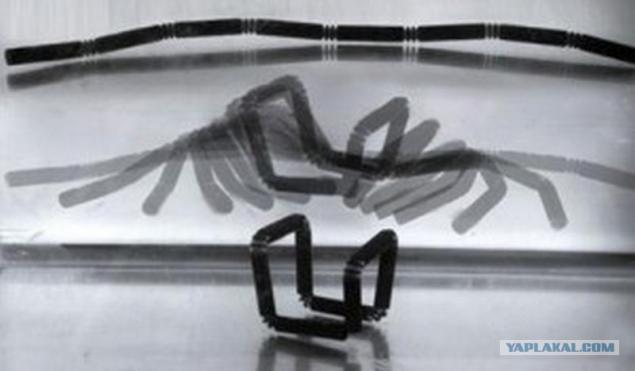
4. Artificial black holes
In science fiction, artificial black holes are found pretty often, but put it into practice, it was not possible. Then researchers at Southeast University in Nanjing in China figured out how to simulate a black hole in the laboratory. They have created a chart with the material to change the transmission of electromagnetic waves. It is similar to the material to create invisibility, but the setting changes are not light, and microwaves. These "meta-materials" absorb electromagnetic radiation and convert it into heat - so do black holes.
The technology can be useful, for example, for energy production. Science need to repeat this experiment with the light because the light wavelength is much less than the length of the microwaves. Nevertheless, it was the first time that managed to create a black hole and keep it under control, so it's only a matter of time when the black holes will also become part of everyday life.
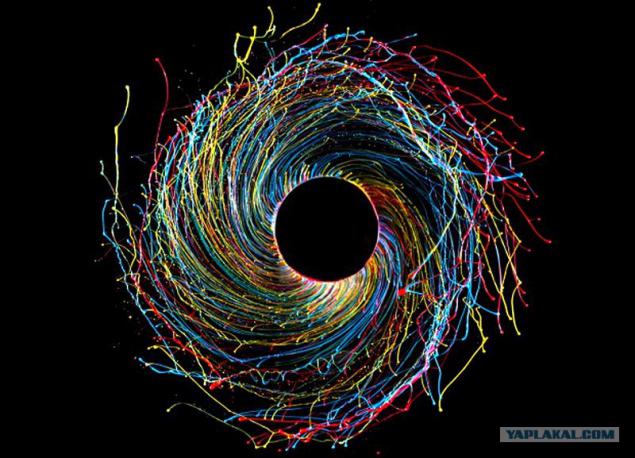
5. Stop light
Einstein was the first to understand that nothing can travel faster than the speed of light. But he did not say anything about how to slow light. Scientists from Harvard University were able to slow light to 20 miles per hour. It was not enough, and they went on: the light is completely stopped.
Scientists used a supercooled material known as "Bose-Einstein condensate." Condensation occurs at temperatures at a billionth of a degree warmer than absolute zero, so the atoms are much less energy to move. Keep in mind that the absolute zero - an abstract concept, it is impossible to achieve: the condensate is formed at the most close to absolute zero temperature, we were able to achieve.
Light managed to stop completely. A particle of light even left a hologram in the place where the movement has stopped. She looked like a stable substance and not a moving wave, as in normal conditions. Stop light particles could be put on the shelf, even if she was not so small, because it is more constant. Now scientists are working on how to reverse the process.

6. Production of antimatter in the lab
Perhaps antimatter - the solution to all our energy problems. But, despite all efforts, scientists have not been able to find the antimatter in the universe, at least in vivo. But were able to successfully create and save antimatter in the laboratory. A group of super-scientists from different countries under the name "ALPHA" opened the way for a split second to save antimatter.
The process took about ten years. But before the idea to create antimatter seemed impossible, because everything in our world is composed of matter and antimatter annihilated as soon as it comes into contact. Now, scientists from CERN have found a way to save a little longer antimatter inside a strong magnetic field. However, the problem is that the field measurements hinders and prevents the correct study antimatter. But we have to work on it: perhaps it is the antimatter reactors will be our salvation when stocks run out of fossil fuels.

7. Telepathy
Science has found a way to connect the human brain to the brain of rats and control the movements of its tail in the distance. This is - quite a feat, but it did not end at that. In experiments conducted by scientists from Duke University and the International Institute of Neuroscience of Natal, Brazil, two rats were able to communicate telepathically, thousands of miles apart. So, in the near future, this technology will be able to use people.
Rats are connected via brain implants. One rat was able to select one of the two arms, depending on the color of the bulb includes a cage. Another rat bulb could not see exactly, but press the right lever under the influence of electrical impulses from the brain of the other rats.
Scientists believe that the experiment can be repeated with the people, and we can interpret the signals much more effective in rats. Achieve human telepathy is now not too difficult, even other people can be sent komnedy from feelings such as sight or touch.

8. The motion faster than light
It was long thought that the speed of light in our universe can not exceed, but scientists from the Research Institute in Princeton, USA, is denied. They missed the laser beams through the chamber with a specially prepared with gas and spotted the time. The laser beam is moved to 300 times faster than the speed of light. Incredibly, the beam came out of the chamber before entered her.
Say, the same violates Einstein proposed laws of cause and effect - it's as if the TV is turned before you press the button on the remote. But, as the researchers explain, technically the law is not violated, since the beam in the future has no ability to influence the conditions of the past. So, Einstein was right. The experiment proved that the speed of light can be overcome and effect can precede cause.

9. Hiding objects from the time
Science already knows how to make a person or objects invisible. Now scientists have taken the next step and figure out how to hide objects from the time. Researchers from Cornell University have created a device that can split the light beam into two components, transport them through space and reconnect at the other end with a temporary lens. It does not remain any record of what happened shaded beam in this time interval. The lens part of the beam slows down fast and slow speeds, creating a temporary vacuum during transmission that hides events in time.
Under normal circumstances, we would get a wave interference, but this device transmits everything that happens on the way to the light and hides it from the time. So far, the event may conceal a very, very long, but sooner or later, scientists discovered how to achieve the same effect for a longer period. Temporary masking will bring huge benefits. In particular, this effect can be used for secure data transmission.

10. What do two things at once
Previously, there was a huge number of theories about how the particles at the quantum level do the impossible, but nothing is known for sure was not. Then scientists from the University of California, Santa Barbara have created a real quantum machine so that we can observe this effect in the real world. They are a tiny piece of metal cooled to the lowest temperature that is only possible for him, that is, they brought him into the so-called basic quantum state. Then they converted it into a quantum chain and pulled it as a string. And notice that the piece of metal at the same time moved and remained motionless. Prior to experiment, this was possible only in theory.
It does not sound too impressive, but for understanding, imagine that a man resting at home and at the same time conquers mountain in Europe. Man doing two things at once. The discovery has huge implications for science, because quantum mechanics can fulfill our wildest dreams. The journal "Science" called it the most important scientific achievement of 2010. Some scientists even saw it as proof of the multiverse. It is important to understand if we can repeat the experiment on objects larger. Nevertheless, the discovery proves that quantum mechanics works, and dwell in two places at once, and "jump" between universes for pleasure will be possible in the not too distant future.
Source

In the world of science is constantly committed amazing new discoveries, and to the extent that, as we move into the future, scientific advances are beginning to border on magic. Science is constantly striving to do the impossible, and she manages it.
Continued under the cut ...
10 points will be

1. Teleport
Humanity has a long way to look for this teleportation. It would seem that science fiction, but science proves that it is possible even that. Researchers from Delft University of Technology were able to teleport information within a single room and prove the theory of quantum entanglement in practice.
They isolated a pair of electrons of the two diamonds at a distance of ten meters from each other. According to the theory of confusion, changing one spin will lead to the fact that the second spin also change. And so it happened: the change of one of the diamond effect on the change of another. The experiment has worked in 100% of cases. Now researchers are working on increasing distance - if the theory is correct, then it too will sooner or later turn out. And if experiments with large distances are successful, we will soon be able to teleport information using quantum particles.

2. Tying light in knots
The light should move in a straight line - a long time it was considered axiomatic. But scientists from the universities of Glasgow, Bristol and Southampton first light tied in knots that previously appeared only abstract mathematical concept. Nodes were created using holograms, directs the flow of light around the areas of darkness. This experiment inspired scientists mathematical knot theory.
One of the leading researchers requested that the light - it is a river. Water can flow both directly and twist into a whirlpool. Holograms are created and controlled by a computer. If you have your hologram, then tie a knot in a beam of light can and you will. This means that there will soon optics remarkable discoveries.

3. self-evolving objects
It will take a little more time, and the technology of 3D-printing firm enters into everyday life. And science has focused attention on the next step: 4D-printing. The fourth dimension - time, which means that the next generation of printers can not just print anything: printed objects can change and adapt themselves. Researchers have already submitted a working 4D-printer that can print filament materials able over time to take simple shapes like a cube. Suppose it does not sound too impressive, but science can change forever.
Soon we will be able to make machines that can reach inaccessible areas, such as "climb" in the deep wells for maintenance. With manufactured from materials such machines medical operations will be terminated independently. Pouring pipes themselves "learn" to understand that crowded. Machines are basically robots that just print to the printer, and not harvested by hand. Using 4D-printing can create materials that will be transformed without human intervention as much as we want. The possibilities are endless.
Yes, it will take some time, but then we will be able to print large objects that are in difficult cases will even develop independently. However, considering how quickly caught on 3D-printing, long wait we do not have.

4. Artificial black holes
In science fiction, artificial black holes are found pretty often, but put it into practice, it was not possible. Then researchers at Southeast University in Nanjing in China figured out how to simulate a black hole in the laboratory. They have created a chart with the material to change the transmission of electromagnetic waves. It is similar to the material to create invisibility, but the setting changes are not light, and microwaves. These "meta-materials" absorb electromagnetic radiation and convert it into heat - so do black holes.
The technology can be useful, for example, for energy production. Science need to repeat this experiment with the light because the light wavelength is much less than the length of the microwaves. Nevertheless, it was the first time that managed to create a black hole and keep it under control, so it's only a matter of time when the black holes will also become part of everyday life.

5. Stop light
Einstein was the first to understand that nothing can travel faster than the speed of light. But he did not say anything about how to slow light. Scientists from Harvard University were able to slow light to 20 miles per hour. It was not enough, and they went on: the light is completely stopped.
Scientists used a supercooled material known as "Bose-Einstein condensate." Condensation occurs at temperatures at a billionth of a degree warmer than absolute zero, so the atoms are much less energy to move. Keep in mind that the absolute zero - an abstract concept, it is impossible to achieve: the condensate is formed at the most close to absolute zero temperature, we were able to achieve.
Light managed to stop completely. A particle of light even left a hologram in the place where the movement has stopped. She looked like a stable substance and not a moving wave, as in normal conditions. Stop light particles could be put on the shelf, even if she was not so small, because it is more constant. Now scientists are working on how to reverse the process.

6. Production of antimatter in the lab
Perhaps antimatter - the solution to all our energy problems. But, despite all efforts, scientists have not been able to find the antimatter in the universe, at least in vivo. But were able to successfully create and save antimatter in the laboratory. A group of super-scientists from different countries under the name "ALPHA" opened the way for a split second to save antimatter.
The process took about ten years. But before the idea to create antimatter seemed impossible, because everything in our world is composed of matter and antimatter annihilated as soon as it comes into contact. Now, scientists from CERN have found a way to save a little longer antimatter inside a strong magnetic field. However, the problem is that the field measurements hinders and prevents the correct study antimatter. But we have to work on it: perhaps it is the antimatter reactors will be our salvation when stocks run out of fossil fuels.

7. Telepathy
Science has found a way to connect the human brain to the brain of rats and control the movements of its tail in the distance. This is - quite a feat, but it did not end at that. In experiments conducted by scientists from Duke University and the International Institute of Neuroscience of Natal, Brazil, two rats were able to communicate telepathically, thousands of miles apart. So, in the near future, this technology will be able to use people.
Rats are connected via brain implants. One rat was able to select one of the two arms, depending on the color of the bulb includes a cage. Another rat bulb could not see exactly, but press the right lever under the influence of electrical impulses from the brain of the other rats.
Scientists believe that the experiment can be repeated with the people, and we can interpret the signals much more effective in rats. Achieve human telepathy is now not too difficult, even other people can be sent komnedy from feelings such as sight or touch.

8. The motion faster than light
It was long thought that the speed of light in our universe can not exceed, but scientists from the Research Institute in Princeton, USA, is denied. They missed the laser beams through the chamber with a specially prepared with gas and spotted the time. The laser beam is moved to 300 times faster than the speed of light. Incredibly, the beam came out of the chamber before entered her.
Say, the same violates Einstein proposed laws of cause and effect - it's as if the TV is turned before you press the button on the remote. But, as the researchers explain, technically the law is not violated, since the beam in the future has no ability to influence the conditions of the past. So, Einstein was right. The experiment proved that the speed of light can be overcome and effect can precede cause.

9. Hiding objects from the time
Science already knows how to make a person or objects invisible. Now scientists have taken the next step and figure out how to hide objects from the time. Researchers from Cornell University have created a device that can split the light beam into two components, transport them through space and reconnect at the other end with a temporary lens. It does not remain any record of what happened shaded beam in this time interval. The lens part of the beam slows down fast and slow speeds, creating a temporary vacuum during transmission that hides events in time.
Under normal circumstances, we would get a wave interference, but this device transmits everything that happens on the way to the light and hides it from the time. So far, the event may conceal a very, very long, but sooner or later, scientists discovered how to achieve the same effect for a longer period. Temporary masking will bring huge benefits. In particular, this effect can be used for secure data transmission.

10. What do two things at once
Previously, there was a huge number of theories about how the particles at the quantum level do the impossible, but nothing is known for sure was not. Then scientists from the University of California, Santa Barbara have created a real quantum machine so that we can observe this effect in the real world. They are a tiny piece of metal cooled to the lowest temperature that is only possible for him, that is, they brought him into the so-called basic quantum state. Then they converted it into a quantum chain and pulled it as a string. And notice that the piece of metal at the same time moved and remained motionless. Prior to experiment, this was possible only in theory.
It does not sound too impressive, but for understanding, imagine that a man resting at home and at the same time conquers mountain in Europe. Man doing two things at once. The discovery has huge implications for science, because quantum mechanics can fulfill our wildest dreams. The journal "Science" called it the most important scientific achievement of 2010. Some scientists even saw it as proof of the multiverse. It is important to understand if we can repeat the experiment on objects larger. Nevertheless, the discovery proves that quantum mechanics works, and dwell in two places at once, and "jump" between universes for pleasure will be possible in the not too distant future.
Source






